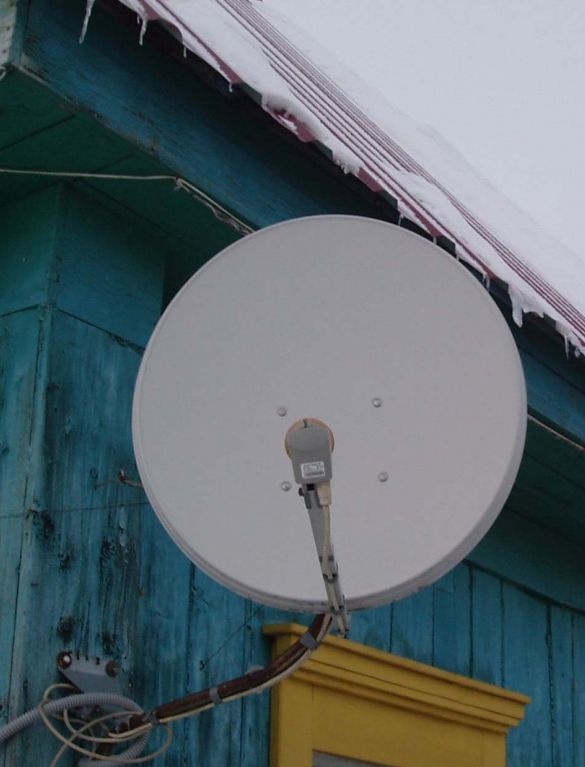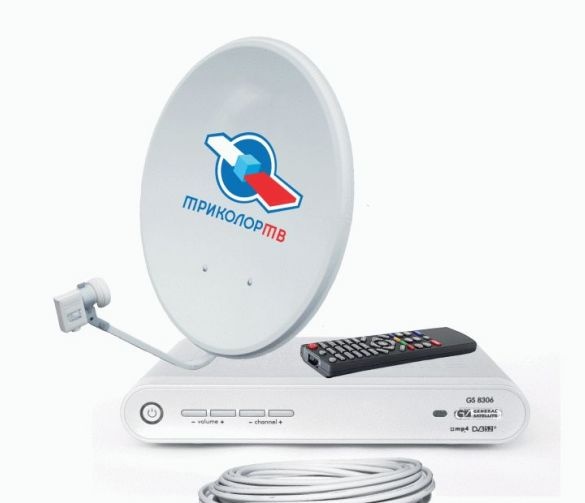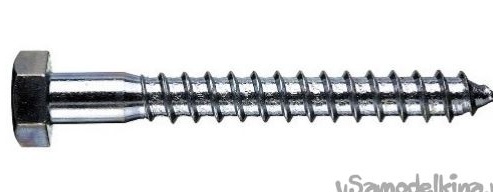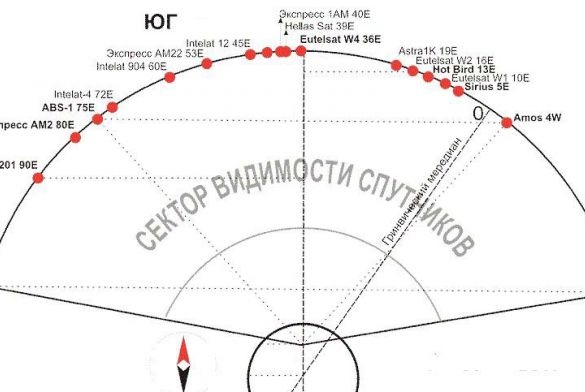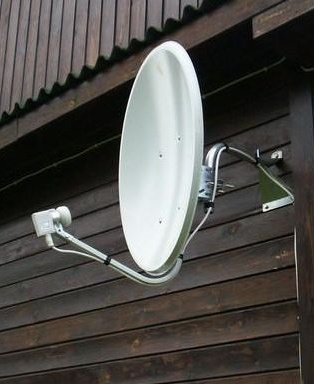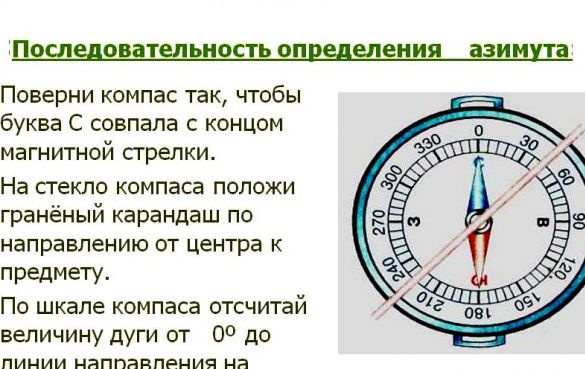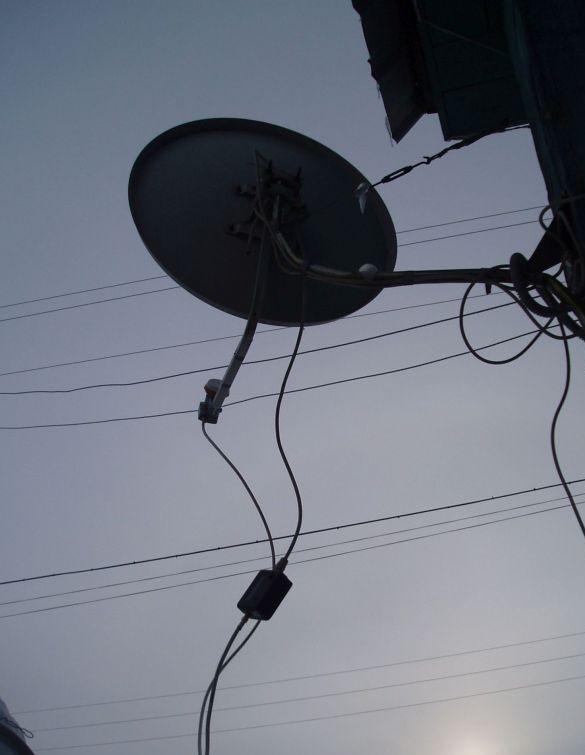In any, even in a large, even small team, in a student group, in a school class, in a word, wherever people live or work, for some reason they give each other nicknames. Either from the fact that it is so shorter, or so more fun, I do not know. In our village, many also have such nicknames.
I won’t write about other people's nicknames, but I’ll say for myself - here I am called TELESPUTNIK for my eyes. This is because I repair TVs and other household appliances, and also very often install and configure satellite dishes.
Here's how to quickly and correctly configure any satellite dish with minimal cost, and I will tell you on the example of the Tricolor satellite.
First, a little economics.
When buying a set of satellite equipment, the seller will certainly offer you the services of specialists (usually his friends) to install it, because the vast majority of buyers do not know how to install satellite dishes.
With the cost of sets of equipment, for example, 9..10 thousand rubles (Tricolor), or 5 ... 8 thousand rubles. (Telecard), the cost of installation services in our area ranges from 1.5 thousand rubles to 2.5 thousand rubles, depending on the complexity of installation work. Not 15 kopecks, however.
And in order to put the antenna in the countryside, you still have to pay the master’s fare there and back, at the rate of about 7 ... 8 rubles. per kilometer, because he will not go to you by bus, but with his instrument and with the devices in his car. And then the cost of installing a satellite dish increases significantly.
That's why they turn to me, because I do it cheaper, and I don’t take money for the journey ...
To install a satellite dish yourself, you will need the following.
1. A set of satellite equipment (dish, receiver, converter, antenna wire)
2. Device for tuning antennas Sat Finder (any make and model)
3. Adapters, F-connectors in the amount of 2 pcs.
4. Three self-locking anchor bolts M6 X 120..150 mm, if the walls of the house are stone
5. Three large bolts - self-tapping screws for wood M6 X 150 ... 200 mm, if the walls are wooden
6. Hammer if the walls are stone
7. Wrenches or adjustable wrenches, for 10, 13, 14, 17 (depending on the bolts)
8. The compass.
9. A piece of antenna wire 1.5..2 meters
And now, as expected, a little theory. In order to understand what needs to be done and why.
There are many satellites in the sky (or rather, in space). They hang there motionless, in a geostationary orbit, spinning with the earth, at a distance of about 36,000 km, and naturally are not visible. Each satellite is in its own space point allocated only to it. The location of each satellite is precisely known, it is invariable, and very precisely supported. In order to understand how the satellites are located and where, imagine ... a rainbow. The satellites above the horizon, from its left edge to the right, are located in approximately the same arc. Depending on where in your big country you live, you will be able to “see” with your antennas a little more or a little less different satellites.
Each satellite has its own name, like a name. For example, the Tricolor satellite, on which we will tune our antenna, used to be called Evtelsat W4 36Е, now it is called Express AMU-1 - 36Е. And Tricolor is just the trade name of an organization transmitting a signal through this satellite. A Telecard (Continent TV), for example, has another satellite, Intelsat15 85E.
In addition, the name of the satellite usually contains a number, for example, 36E, 85E, 90E, 5W, 9W, which indicates the longitude over which it hangs, that is, the approximate direction to this satellite on the horizon.
But in our case, the sun and the compass will be used to determine the direction to the satellite.
First of all, before installing the antenna, you need to decide which side of the house it should be placed on. For the area in which I live (Bashkortostan, 56 degrees east longitude) and the Tricolor satellite, this will be the south side, approximately the place from which the sun is clearly visible from 12 to 14 hours of the day. There should not be any interference in the form of trees, roofs, and high-voltage power lines between you and the sun (satellite). The height of the antenna on the wall does not matter, mount it where it will be more convenient for you to adjust it, so that the antenna does not interfere with the passage or passage. For example, I have one of the antennas standing directly on the ground, on an iron stand. I do not advise you to put the antenna on the roof, then you are tormented by climbing if something happens to it. Naturally, it is also not necessary to fix a plate under the edge of the roof so that rain, snow and ice do not subsequently fall on the antenna. It should be possible to rotate the antenna when tuning left and right as wide as possible.
Here's an example of how it looks.
Now about the plate. In fact, it is not quite a plate, rather it is part of it, slightly compressed laterally and elongated. Such a dish has an egg-shaped shape and is called offset, it works like a crooked mirror, not only collecting, but also REFLECTING the radio waves from the satellite to the receiving converter.
Therefore, the procedure for adjusting the position of the plate is approximately the same as if you came to the shooting range and began to aim at the target, standing with your back to it, through the mirror.

Before the dish itself, with the receiving converter will be attached to the wall of the house, you need to more accurately determine the direction to the satellite. While it will be approximately, on a compass. Once again, for my area it will be an azimuth of 204 degrees. Let me remind you, if anyone does not remember: to take the azimuth, you need to set the compass so that its arrow points to the north, and below it was a zero mark on its scale. Without moving the compass, find on a scale of 204 degrees and notice this direction on the ground. Let it be a direction to some tree, structure, bush, stone, or whatever you have there.
High accuracy is not required here, everything is approximately. After that, stand at the place of the future installation of the antenna and look carefully in this direction at the sky, at an angle to the horizon of about 20 ... 25 degrees. The Tricolor satellite is somewhere there. There should not be any obstacles in this direction in the form of roofs, trees, branches, poles, power lines. Here somewhere here and fasten your plate.
If the wall of the house is wooden, then the process of fixing the plate should be treated with special care, making sure that the screws get into the supporting structure of the house, in the beam, in the log or in the partition.If you screw the plate simply onto the boards or onto the crate, then when the humidity drops (summer - autumn - winter - spring) the tree will swell a little or shrink a little, the plate will move, the signal will disappear. In my practice, this has happened many times.
The accuracy of the installation of a satellite dish greatly affects the quality of reception, the permissible vibration or error here is no more than 3 (three!) Millimeters.
After the plate is fixed, first set the position of the mirror strictly vertically, in level or plumb, and then slightly backfill it by 1.5..2 centimeters. Do not tighten the bolts on the plate mount.
Here in this photo you can clearly see how much you need to reject the plate.
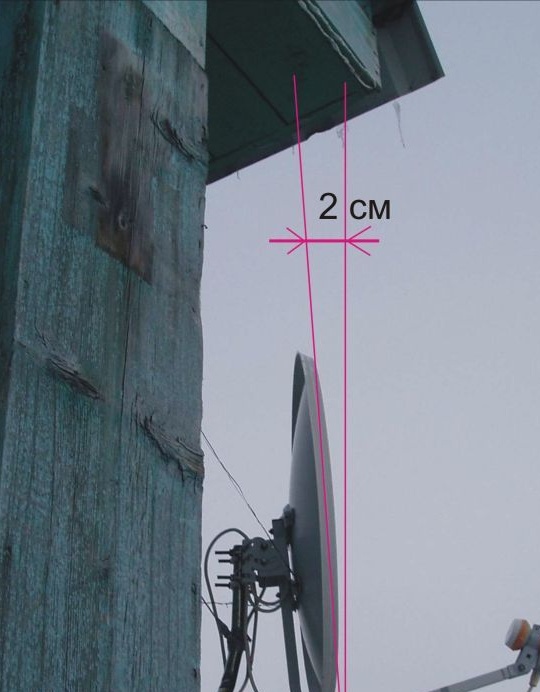
Connect the receiver to the TV as indicated in its instructions. Turn it on. The receiver enters channel search mode. Do not press anything, leave it in the state as it is. Connect the antenna wire from the dish to the receiver. Then on the street, connect the wire coming from the receiver using the F-connectors to the Sat Finder, and connect the other wire, prepared in advance, short, to the converter on a plate. An approximate type of wire cutting in the figure.
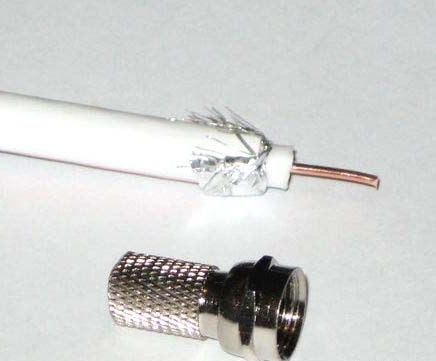
If there are no breaks or short circuits in the wiring, then the scale backlight will light up in it. This means that power is supplied to the plate. Turn the sensitivity control to make the device crackle a little from interference (but not squeak).
A bit about Sat Finder.
Do not count for advertising. His name is SF-9501, sold in almost all electronic stores, or as a last resort, on Alibaba.com. An irreplaceable thing when setting up any satellite dish. At a relatively low cost (400 ... 600 rubles) saves a huge amount of time and nerves.
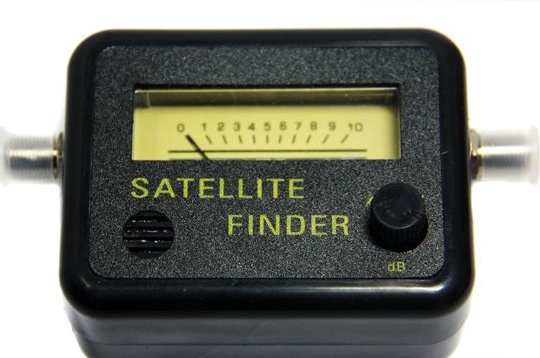
The principle of operation of this device is based on measuring the signal strength at the converter output and its sound and arrow indication.
There are various models and modifications, with displays, programmable, etc., but in our case the simplest model will be more than enough.
Now that all the connections have been checked and the noise is heard in the device cracking, start slowly, very slowly moving the plate horizontally to the left, and then to the right. As the dish moves, you will hear several different signals from various satellites (there are many of them). Your task is to choose the strongest of them and leave the plate in this position.
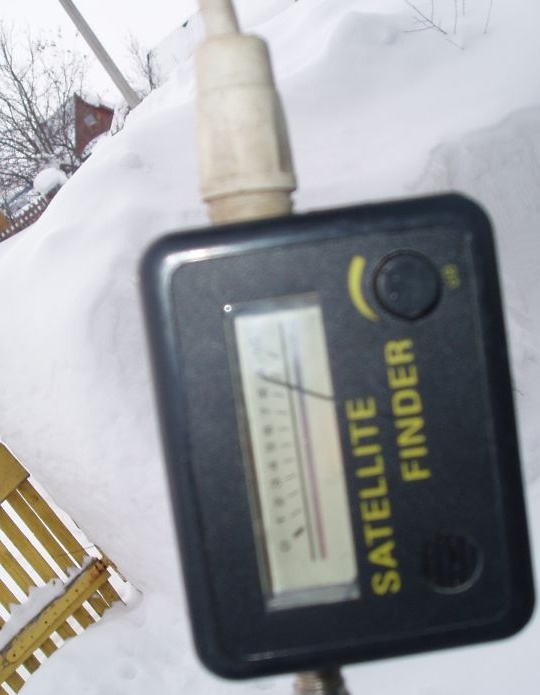
Then reduce the sensitivity (tweeter volume) of the Sat Finder with the knob and select more precisely the position of the plate in a horizontal plane.
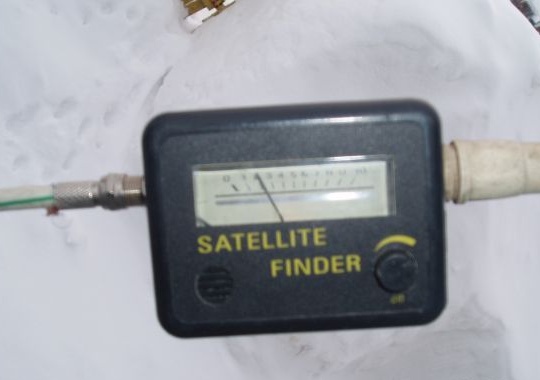
If the signals are weak or not heard at all, lightly pop the plate back (1 cm) and try searching for the signal in the horizontal plane again. Thus, by searching horizontally, and with each pass raising the plate slightly above the horizon, you will find the satellite with the strongest signal. After such a signal is found, try moving the plate up or down a little (per centimeter, not more), achieving the maximum signal strength. If necessary, lower the sensitivity of the instrument for finer tuning.
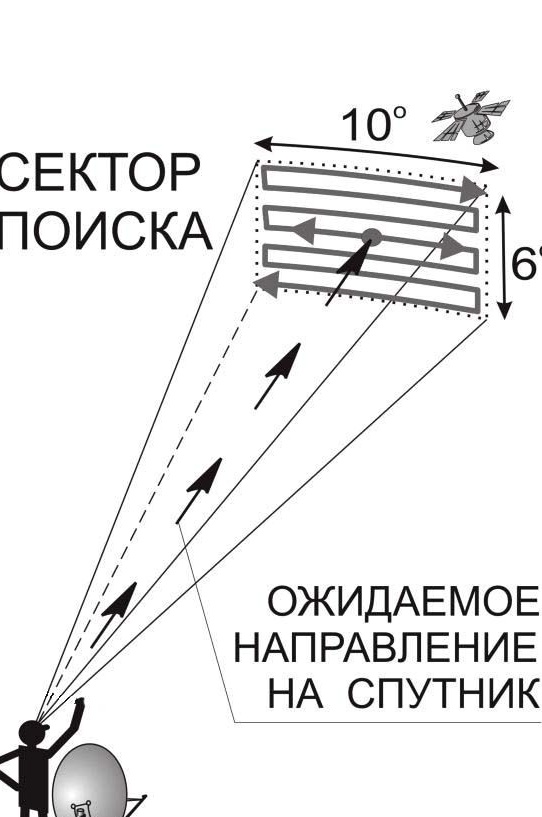
Check the approximate direction of the dish to the satellite, it should not differ from the previously found compass by more than 5 ... 8 degrees in one direction or another.
Return to the TV. According to the instructions for the receiver, perform an initial channel search. Operator - Tricolor, region - Chelyabinsk or Ural. If the dish is configured correctly, then you will see a list of many channels. Check if there are Tricolor - Info and channels Tricolor - Promo, TV-TV, TV2-TV among them. These channels should work even without activating an access card.
After all the channels are found, return to the plate and carefully, so as not to disrupt the setting, fix with a key all the plate mounts and all bolts with nuts, controlling the signal strength on the device.
After fixing the antenna and checking the image on the TV, turn off the device, and connect the wire from the receiver to the converter on the plate. This completes the setup. From the Tricolor satellite you will be able to view about ten free channels and about 300 paid ones.Now you should register your equipment with the operator by calling the special number specified in the instructions for the receiver. After registering the equipment, all channels found during setup will be available for viewing.
I think that viewing will be much more pleasant, considering that the entire budget of our enterprise (with nails and electrical tape) is at the level of 700 ... 800 rubles.
As practice has shown, the Sat Finder tidy will come in handy more than once. Either the wind is strong, or snow with ice, or some kind of reconstruction in the house, you can always go and set up a shifted antenna, both at home and at your neighbor.
Yes, just in case, I’ll give you the parameters for the Intelsat 15 85E satellite, for the Telecard. The azimuth is 143 degrees, the elevation angle, that is, the “rolling up" of the plate, is the same as that of the Tricolor. The rest of the setup methodology is exactly the same.
Happy viewing!

